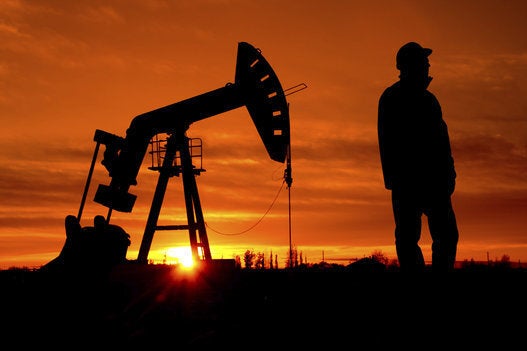
The planet was on red alert. No, not a threat of imminent invasion. Not a global epidemic. And it wasn't about a geopolitical unraveling. Not even impending economic and financial collapse. It was all about energy. In early 2008, the messages were clear. We are running out of oil. All the easy stuff has been discovered. A larger share of production is in politically difficult countries. Higher oil costs spell the end of globalization. The messages flashed across the globe repeatedly, and were so believable that speculation heightened the havoc. But the bubble burst, and six years on, prices are south of $90 per barrel and falling. Do lower prices make sense, or is this just temporary?
First off, we need to understand the hyperanalysis of 2008. Oil prices began to rise in early 2007 from the low-$50 level to just under $75 by the fall. That's pretty dramatic, although prices had hit $75 in 2006. Yet those gyrations paled in comparison to what was coming. Oil sold for over $90 per barrel by year-end, and continued a steady march through July, 2008, hitting $145. Unclear of the reasons for the runup, markets presumed that it was a reaction to the significant current and near-future needs of emerging markets, together with steady increases in demand from the rest of the world. It sure looked as if prices were unstoppable, surging toward $200 per barrel.
It's easy to forget now, but the drama didn't end there. Prices hit a low of $30 just before Christmas as financial and then economic crisis swept over the globe. Most analysts were red-faced and befuddled, and energy investors were livid. Fortunately for both camps, there was a quasi-recovery. Prices were back to $75 by late 2009. What followed this was, once again, extraordinary. The rebound in 2009-10 made sense in light of the precedent-setting deluge of global fiscal stimulus. But the flat economic performance that soon ensued -- and persisted for four years -- suggested prices much lower than the 2011-13 average of US $96. So, were the "supply-bears" right?
Actually, the data prove them quite wrong. Inventories soared in the wake of crisis, as production increases clashed with significantly lower usage worldwide. Moreover, the price scare encouraged lower energy intensity -- oil usage per unit of GDP continued to fall in developed and emerging markets alike. But the price spike also encouraged higher exploration and development. Oil plays that were previously uneconomic became viable, and spurred on innovation that continues to lower the cost of recovery. Since 2005, U.S. production has soared by 4.5 million barrels per day (mmbd), thanks to the significant contribution from shale deposits. At the same time, Canadian supply is up 1.2 mmbd, and there have been significant increases in Brazil, the Middle East and other key producers. We should hardly be surprised; production increases always follow price spikes. Pre-crisis, peak global production was pegged to occur sometime toward the end of the last decade. That date, always a moving target, has been shifted out to 2025.
Why, then, were prices so resilient? In a word, liquidity. The vast amounts of cash reserves amassed by corporations in addition to unprecedented cash injections by the Fed occurred at a moment when the world didn't really need them. Corporations weren't investing. Consumers weren't borrowing; indeed, they were deleveraging in a big way. But the cash still had to earn a return, and it seems that in the general search for yield, it made its way to the periphery of the market, including commodities. It's possible that prices have been artificially high for a long time.
Now, with the economy recovering and geopolitical tensions compromising key oil flows, we should expect prices to be rising. However, the opposite is happening. Increased supplies are a key factor, but they don't explain everything. Lower prices are also roughly in synch with the Fed's tapering program. If so, then we can expect oil prices to continue weakening as tapering morphs into other forms of monetary tightening.
The bottom line? It's clearly abnormal, but it looks like higher world growth will mean lower oil prices. It's not the best news for oil producers. But here's a neat upside: the growth that leads to lower oil prices will be further fueled by them -- a timely and badly-needed bit of "growth insurance."
MORE ON HUFFPOST:
